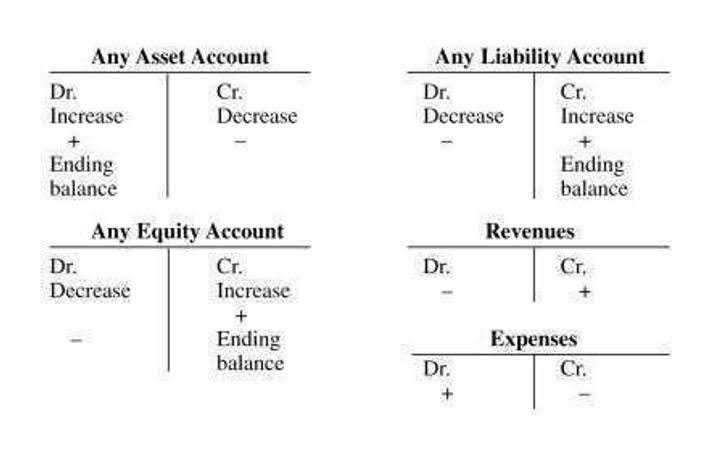Inherent Risk: Definition, Examples, and 3 Types of Audit Risks

A beneficial element within the practice guide are the “Audit Considerations” sprinkled throughout the document. There are several different risk mitigation strategies you can employ to manage risk, along with tools to make it https://www.bookstime.com/ easier to monitor risk. Download our data sheet to learn how you can run your processes up to 100x faster and with 98% fewer errors. The best way to protect your business from audit risk is to understand how much risk you face.
Importance of Strategic Risk Management
Every individual should be made aware of the expectations involved and the overall culture surrounding risk. When an audit is carried out by a certified public accountant (CPA) or accountancy firm, then the auditor or firm carries the risk of being wrong in their auditing work. For this reason, many CPAs will hold malpractice insurance to mitigate the legal liability involved.
Why Do Auditors Perform a Risk Assessment?
- Like risk management, strategic risk management follows the same steps of risk identification, risk assessment, and risk mitigation.
- Together, these tools form a formidable arsenal in the auditor’s quest to mitigate audit risk.
- Since a cybersecurity control environment relies on a series of complementary controls, your evaluation should address all six of the questions presented thoroughly.
- Since inherent risk and control risk is outside of the hands of an auditor, their only way to impact the overall audit risk is to manage the detection risk aspect of the equation.
Detection risk is the risk that auditors fail to detect material misstatements that exist on the financial statements. If auditors believe that the client’s internal control can reduce the risk of material misstatement, they will assess the control risk as low and perform the test of controls to obtain evidence to support their assessment. This means that the auditor may not have identified any errors or irregularities in the financial statements, which could lead to losses for investors or shareholders.

Material Misstatement Risk
Because creditors, investors, and other stakeholders rely on the financial statements, audit risk may carry legal liability for a certified public accountancy (CPA) firm performing audit work. In this case, auditors need to make sure that the level of audit risk is acceptably low. This is so that auditors can minimize the risk of providing a wrong opinion on financial statements. Responses are not as detailed as audit procedures; instead they relate to the approach the auditor will adopt to confirm whether the transactions or balances are materially misstated.

- There are several different risk mitigation strategies you can employ to manage risk, along with tools to make it easier to monitor risk.
- As you plan for the near future, the resources described above will better prepare you to tackle the most urgent risks facing your organization.
- If auditors believe that the client’s internal control can reduce the risk of material misstatement, they will assess the control risk as low and perform the test of controls to obtain evidence to support their assessment.
- In either case, auditors are responsible for identifying any errors and inconsistencies.
- They attribute this to being engaged with their clients and to their staff working remotely pre-pandemic.
- Risk management strategy is the process of performing risk assessment, risk response, and risk monitoring.
To determine control risk, the auditor must obtain knowledge about how the business collects, stores, transforms data, and curates its financial statements. Material misstatement risk is the risk that the financial reports are materially incorrect before the audit is performed. In this case, the word “material” refers to a dollar amount that is large enough to change the opinion of a financial statement reader, and the percentage or dollar amount is subjective. If the sporting goods store’s inventory balance of $1 million is incorrect by $100,000, a stakeholder reading the financial statements may consider that a material amount.
These are just a few of the HR functions accounting firms must provide to stay competitive in the talent game. At Cohen & Company, which has more than 650 professionals in 10 offices, audit teams have meetings to kick off the audit risk model audit season. “Each engagement partner takes a highly active role in planning and directing audit team focus on areas that need heightened skepticism and judgment and crafting the appropriate audit response,” Kovacs said.
Factors that can increase inherent risk include subjective estimates, non-routine transactions, and the use of complex financial instruments. Generally, the more complicated a company’s business model and transactions are, the higher the inherent risk is. Inherent risk is an error or omission in a financial statement due to a factor other than a failure of internal control. Control risk, on the other hand, refers to the misstatement of financial statements due to sloppy accounting practices.
- For this reason, many CPAs will hold malpractice insurance to mitigate the legal liability involved.
- The paper Compliance Risk Assessments, from Deloitte, is a useful resource for assessing compliance risks and a great starting point for internal auditors in industries facing regulatory scrutiny.
- Along with the transactions and complexity that internally exist, inherent risk is also affected by external factors.
- Auditors are using data tools to extract client general ledger data and perform analysis remotely, which takes some of the burden of providing audit support off clients.
- Detection risk is the risk that the auditor’s procedures do not detect a material misstatement.
- This transparency is crucial for accountability, enabling a clear understanding of the decisions made throughout the audit.
Detection risk, on the other hand, is one of the three components of audit risk along with control and inherent risk. When an auditor fails to find material misstatements in a financial statement or company’s financial reporting, this is known as detection risk. The judicious application of audit procedures and technologies enables auditors to effectively manage and mitigate audit risk, culminating in an audit opinion grounded in thorough analysis and deep insight. This dedication to risk assessment and management underscores the pivotal role of internal controls and strategic planning in achieving financial statement precision and reliability. By doing so, they position themselves at the forefront of the profession, ready to tackle audit risks with confidence and precision.


